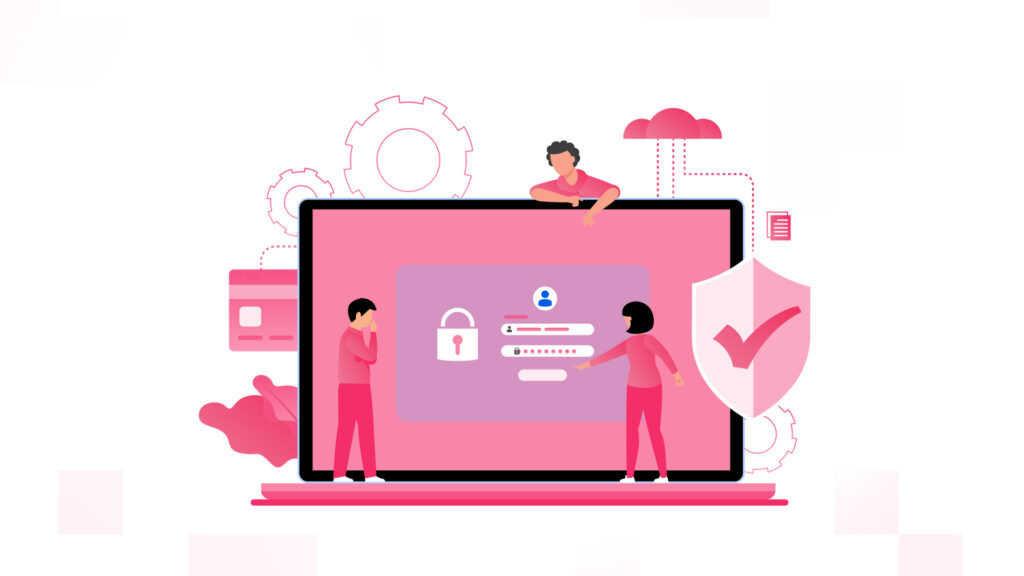Software Development Challenges & How to Solve Them

Software development indeed has a lot of opportunities and yet even more obstacles. The missed deadlines, buggy software, frustrated teams, soaring costs-these are only a handful of nightmares that prey on the minds of developers and project managers.
And the reality: software projects are seldom as they are planned. Requirements change during development; security holes pop up at the most undesirable moments, and scaling issues can ruin an otherwise promising product by turning it into a slow, clunky mess. And, not even get into the matter of technical debt, which piles up in silent heaps until it becomes a massive barrier.
So, what’s the way ahead? How do such companies and developers find their way through these obstacles without throwing the whole project overboard? The answers are rarely simple, but they do exist. Let’s get down to some of the best issues around software development and uncover what it takes to take them on.
Why Understanding Software Development Challenges is Crucial
Ignoring software development challenges is not just related to a technical problem, it’s more than that! Custom software development can cost you more than usual if you don’t understand these problems. Studies show that over 66% of software projects experience cost overruns, and nearly 70% fail due to poor requirement management, scope creep, or technical debt (Standish Group). When companies fail to anticipate these obstacles, they end up paying far more in the long run—whether through extended development cycles, expensive bug fixes, or complete project failures.
Take scope creep, for example. Research from PMI (Project Management Institute) indicates that 47% of projects experience scope creep, leading to missed deadlines and increased costs. Every unexpected feature request, change in requirements, or rework adds extra hours to development, raising labor costs significantly. A study by McKinsey found that large IT projects exceed their budget by 45% on average and take 7% longer than estimated—all because of unforeseen complexities.
Technical debt is another silent cost driver. According to a report by Stripe, developers spend 42% of their time just working through technical debt and maintenance rather than writing new code. This resource is utilized inefficiently, and it results in a reduced flow of innovation. Businesses usually spend millions of dollars to maintain unreliable systems rather than investing in new and trustworthy custom software development companies.
Security issues pose a huge financial risk. IBM estimated that the average cost of a data breach in 2023 would be $4.45 million. Businesses that overlook security throughout the development stage risk regulatory fines, legal action, and brand damage. To sum up, recognizing these challenges enables businesses to make better plans, allocate resources appropriately, and put proactive solutions into place.
Vague or Changing Requirements

You’re halfway through your project, buried in your coding when suddenly the client demands massive changes. Perhaps they have seen a popular competitor’s product and want to add new features, or maybe they feel that the market trend has changed. No matter what the reason is, constant changes disrupt workflows, delay releases, and frustrate developers.
External changes do not just affect the project; internal teams also meet the effects of scope creep as soon as members start adding ‘just one more thing’ from the stakeholders, and the project soon spirals out of control by one too many suggestions.
So, how do you handle these moving goalposts without losing momentum?
The Fix:
- Get it in writing. Before a single line of code is written, make sure requirements are documented and agreed upon.
- Stay flexible with Agile. Agile development allows for changes without derailing the entire project.
- Use prototypes. A rough draft (wireframe, mockup, or prototype) helps everyone visualize the final product before committing resources.
- Regular check-ins. Weekly or bi-weekly meetings with stakeholders ensure alignment and prevent surprises.
Poor Planning & Project Management

Deadlines can be both a guiding force and a nightmare. Too often, software teams are given tight, unrealistic timelines with little room for unexpected roadblocks. Stakeholders expect rapid development, but quality work takes time.
When speed is prioritized over stability, corners get cut—leading to sloppy code, increased bugs, and a painful backlog of fixes. The pressure to ‘just get it done’ can also burn out developers, decreasing productivity in the long run.
But is there a way to meet deadlines without sacrificing quality? That’s where smart planning and agile execution come into play.
The Fix:
- Break it down. Define milestones and set realistic timelines.
- Use the right tools. Project management platforms like Jira, Trello, or Asana can keep everything on track.
- Expect the unexpected. Identify potential risks early and have contingency plans in place.
- Keep everyone involved. Developers, designers, and testers should collaborate from the start.
Need a reliable team for Software Development Services?
We Can Help!
Technical Debt Accumulating Over Time

It’s tempting to take shortcuts when trying to meet deadlines, but quick fixes often lead to long-term problems. Messy code, outdated libraries, and unaddressed bugs can accumulate into technical debt—causing inefficiencies, security vulnerabilities, and costly reworks in the future.
The more technical debt piles up, the harder it becomes to maintain and scale a project. Teams end up spending more time debugging and patching rather than building new features. Over time, this leads to slower development cycles, increased system downtime, and frustrated developers stuck fixing legacy code instead of innovating.
Technical debt can arise for many reasons, including poor initial architecture decisions, lack of documentation, rushed development, and ignoring regular maintenance. While some level of technical debt is inevitable, failing to manage it can lead to software that becomes unmaintainable, insecure, and expensive to refactor.
How to Fix It
- Refactor Regularly – Allocate time for continuous code improvements instead of letting bad practices pile up.
- Follow Coding Standards – Enforce best practices and consistent documentation to maintain clean, readable code.
- Invest in Code Reviews – Peer reviews help catch issues early before they evolve into major problems.
- Prioritize Debt Reduction – Schedule regular “tech debt sprints” where the team focuses solely on refactoring and cleaning up code.
Security Vulnerabilities & Data Breaches

Lack of security is often on the back burner- until things become worse. With one vulnerability, there can be leaked sensitive user data, tarnished reputation of the organization, and large compliance fines to pay. Unfortunately, numerous development teams nowadays do embrace security as one of the least important aspects of the entire development process.
Cyber adversaries keep changing fast, easy to overlook with the ever-so complex software system. The most common of such are weak authentication mechanisms, un-patched dependencies, and poor encryption practices.
So how can you ensure that security gets to be your weakest link?
The Fix
- Shifting the Approach Left- This states that security checks should be implemented early in the software development lifecycle rather than at the end of it, before deployment.
- Regular Security Audit- This includes conducting penetration testing and vulnerability assessments to discover weaknesses before hackers discover them.
- Enact Best Practices- Use secure coding guidelines, enforce multi-factor authentication, and encrypt sensitive data.
- Keep Dependencies Updated- Regular updating of third-party developing libraries and frameworks through which use is made so as to avoid and plug exploit gaps of outdated versions.
Scalability Challenges

A product might work flawlessly when it has a handful of users, but what happens when traffic spikes? Slow performance, server crashes, and system bottlenecks can turn a promising software solution into a disaster. Poor scalability planning can result in an application that simply can’t handle growth, frustrating users and stalling business expansion.
Many teams focus on building a working MVP but forget to design architecture that can grow with demand. This leads to performance degradation, increased downtime, and costly infrastructure overhauls.
The Fix
- Modular Architecture – Design software with scalability in mind, using microservices instead of monolithic structures.
- Load Testing – Simulate high-traffic scenarios before launch to ensure the system can handle real-world usage.
- Cloud Infrastructure – Utilize scalable cloud solutions like AWS, Google Cloud, or Azure that can dynamically adjust resources.
- Efficient Database Management – Optimize queries, use indexing, and implement caching to improve data retrieval speeds.
Communication Breakdowns in Teams

Software development isn’t just about code—it’s about collaboration. Miscommunication between developers, designers, and stakeholders can lead to misunderstandings, missed requirements, and wasted efforts.
A developer might interpret a feature request differently from what the client envisioned. A tester might assume a certain function is out of scope, while the project manager believes it’s a priority. These communication gaps create friction, confusion, and delays.
The Fix
- Daily Standups – Short, daily check-ins keep everyone aligned and clear on priorities.
- Clear Documentation – Maintain well-documented requirements, workflows, and decisions to avoid ambiguity.
- Centralized Communication Tools – Use Slack, Microsoft Teams, or other platforms to streamline discussions.
- Encourage Open Feedback – Foster an environment where team members feel comfortable voicing concerns early.
The Ever-Growing Importance of Software Development
In today’s digital-first world, software development is more than just writing code—it’s the foundation of innovation, business growth, and customer satisfaction. Companies across industries, from healthcare to finance, rely on software solutions to streamline operations, enhance user experiences, and stay ahead of competitors.
The demand for scalable, secure, and high-performing software continues to rise, making it essential for development teams to embrace best practices and continuously refine their skills. With the rapid advancements in AI, cloud computing, and automation, the ability to adapt to new technologies is crucial.
Organizations that invest in robust software development not only build reliable products but also gain a competitive edge in an increasingly tech-driven market. The challenges may be inevitable, but with the right strategies, teams can transform obstacles into opportunities and deliver solutions that make a lasting impact.
Looking for a Software Development Partner?
We Can Help!
Final Thoughts
Overcoming Software Development Challenges No software project is ever free from challenges, but the way teams handle them makes all the difference. Whether it’s shifting priorities, looming deadlines, or technical roadblocks, every obstacle has a solution.
By focusing on clear planning, effective collaboration, continuous improvement, and a proactive approach to security and scalability, development teams can create software that not only works but thrives.
After all, great software isn’t just about writing code—it’s about solving problems. And the best teams? They don’t just work around challenges; they tackle them head-on.
What are some of the biggest software development challenges you’ve faced? Discuss with your software development agency.
 Shopify
Shopify










